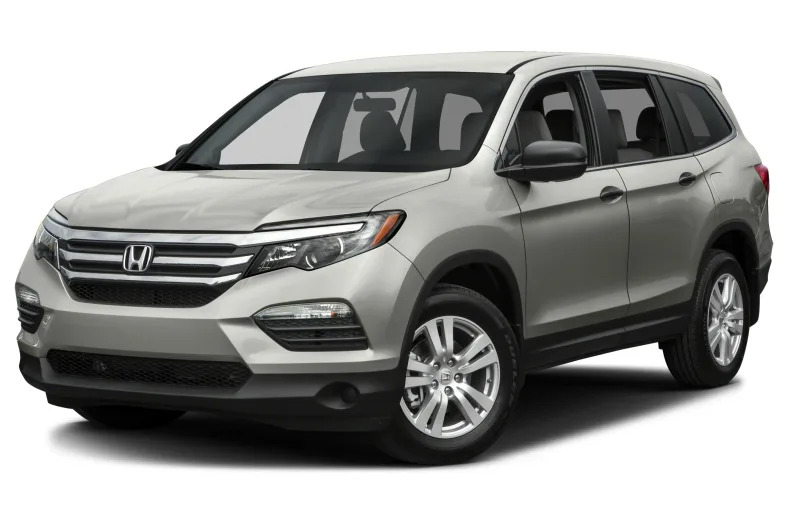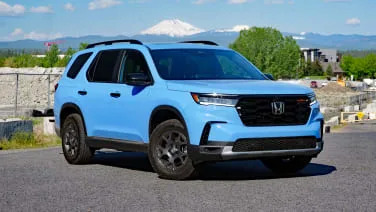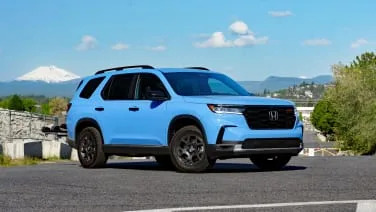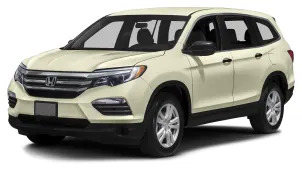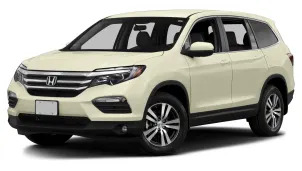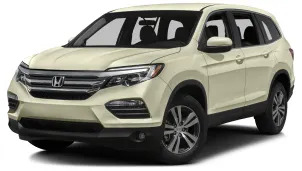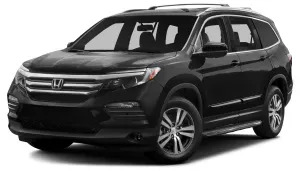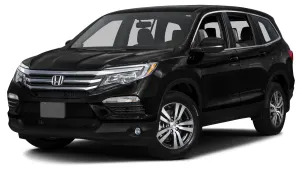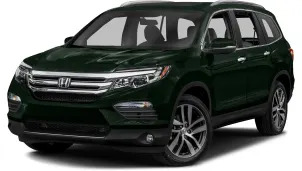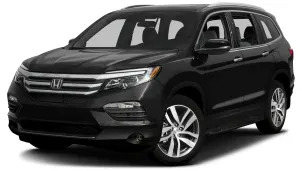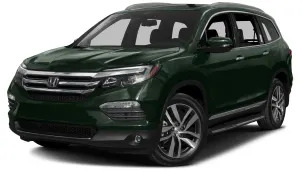LX 4dr All-Wheel Drive
2016 Honda Pilot
For all it had going for it, the second-generation Honda Pilot was stung by one undeniable fact: it looked like a big, boxy SUV at a time when consumer favor was shifting towards car-based crossovers. For 2016, though, Honda is offering a third-generation Pilot that not only does away with the old model's brutalist looks, but also adopts bleeding-edge safety technology and fuel-efficient powertrains.
The Pilot's new styling still doesn't really work, to our eyes. That's not because of the CR-V-inspired headlights or Accord-derived grille. It's not even because of the horizontally oriented, reshaped taillights. The biggest …
Full Review
For all it had going for it, the second-generation Honda Pilot was stung by one undeniable fact: it looked like a big, boxy SUV at a time when consumer favor was shifting towards car-based crossovers. For 2016, though, Honda is offering a third-generation Pilot that not only does away with the old model's brutalist looks, but also adopts bleeding-edge safety technology and fuel-efficient powertrains.
The Pilot's new styling still doesn't really work, to our eyes. That's not because of the CR-V-inspired headlights or Accord-derived grille. It's not even because of the horizontally oriented, reshaped taillights. The biggest …
Hide Full Review
The Pilot's new styling still doesn't really work, to our eyes. That's not because of the CR-V-inspired headlights or Accord-derived grille. It's not even because of the horizontally oriented, reshaped taillights. The biggest …
Hide Full Review
Retail Price
$32,145
MSRP / Window Sticker Price
| Engine | 3.5L V-6 |
| MPG | 18 City / 26 Hwy |
| Seating | 8 Passengers |
| Transmission | 6-spd auto w/OD |
| Power | 280 @ 6000 rpm |
| Drivetrain | all wheel |
Smart Buy Program is powered by 

